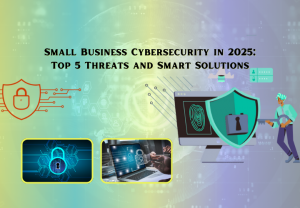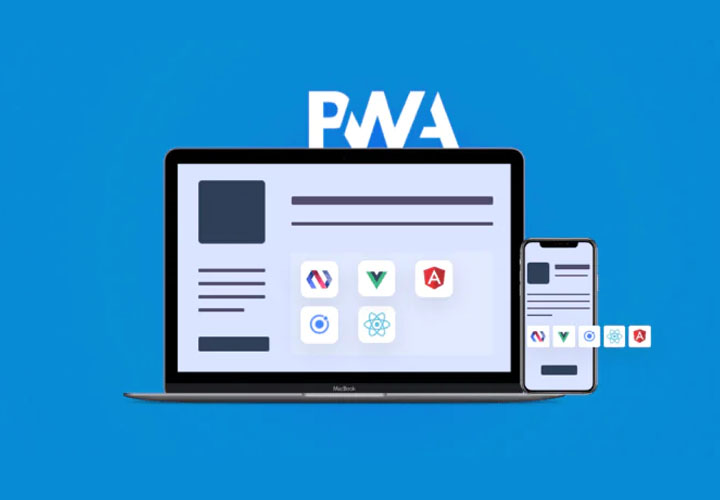
In today’s digital world, cybersecurity threats for small businesses are escalating at an alarming rate. By 2025, cybercriminals are using advanced tools like AI-driven malware, social engineering, and automated ransomware attacks to target vulnerable organizations.
Many small businesses mistakenly believe that they’re too small to be on a hacker’s radar. But in reality, lacking robust cyber protection for small business makes them an easy target.
Why Cybersecurity Matters for Small Businesses in 2025
The cost of a cyberattack can be devastating. Beyond financial losses, businesses face damage to reputation, customer trust, and legal consequences. A 2025 report by cybersecurity experts estimates that over 70% of small businesses experience some form of cyberattack—most of which could have been prevented with basic measures.
Let’s explore the most common and dangerous cyber threats and how your small business can defend against them.
- Ransomware Attacks
📌 The Threat:
Ransomware encrypts your business data and demands payment to restore access. In 2025, these attacks are automated and can spread across devices within minutes, targeting small businesses with minimal security defenses.
✅ Smart Solutions:
- Backup Regularly: Use both cloud-based and offline backups. Automate the backup process and test recovery protocols regularly.
- Use Anti-Ransomware Tools: Choose cybersecurity software with built-in ransomware protection.
- Update Systems: Keep all operating systems, software, and plugins up to date to patch vulnerabilities.
- Implement a Recovery Plan: Prepare a clear step-by-step response plan in case of an attack.
- Phishing and Social Engineering
📌 The Threat:
Phishing remains one of the most common cybersecurity threats for small businesses. In 2025, AI-powered phishing emails look real—impersonating vendors, banks, or internal staff to steal credentials or install malware.
✅ Smart Solutions:
- Email Filtering Tools: Use spam filters and anti-phishing software to detect fake emails before they reach your inbox.
- Employee Training: Conduct simulations to train staff to spot and report phishing attempts.
- Multi-Factor Authentication (MFA): Even if passwords are stolen, MFA adds an extra layer of protection.
- Verify Requests: Encourage employees to verify sensitive or financial requests through secondary channels (e.g., phone calls).
- Weak Passwords and Credential Theft
📌 The Threat:
Many employees still use weak or repeated passwords. In 2025, hackers use bots to test thousands of stolen credentials on business systems, a method known as credential stuffing.
✅ Smart Solutions:
- Password Management Tools: Encourage the use of secure password managers that generate complex, unique passwords.
- Biometric Authentication: Use fingerprint or face recognition where possible to replace passwords.
- Enforce Password Policies: Set minimum length and complexity requirements, and require frequent changes for admin-level access.
- Dark Web Monitoring: Get alerts when your business credentials are found in data leaks.
- IoT Vulnerabilities
📌 The Threat:
From smart speakers to security cameras, Internet of Things (IoT) devices are everywhere. In 2025, hackers exploit outdated firmware and weak settings in these devices to access your network.
✅ Smart Solutions:
- Separate Networks: Put IoT devices on their own network, isolated from business-critical systems.
- Update Firmware: Schedule regular updates for all devices to close security gaps.
- Turn Off Unused Features: Disable unnecessary services or ports to reduce the attack surface.
- Inventory Management: Keep a list of all devices connected to your network with their update status.
- Insider Threats and Human Error
📌 The Threat:
Sometimes the biggest risk comes from within. Whether intentional or accidental, insider threats are hard to detect and can cause significant damage.
✅ Smart Solutions:
- Limit Access: Follow the principle of least privilege—give employees access only to the data they need.
- Monitor Activity: Use tools to track file downloads, login activity, and unusual behavior.
- Secure Offboarding: Immediately revoke access when an employee leaves the company.
- Build a Security Culture: Promote awareness, responsibility, and open communication around cybersecurity service.
Bonus: 2025 Cybersecurity Trends to Watch
To stay ahead of cyber threats, small businesses should also be aware of emerging trends in the cybersecurity space:
🔐 AI-Driven Threat Detection
Advanced AI tools can now identify and respond to threats in real time, even before they cause damage.
🔐 Cybersecurity as a Service (CSaaS)
Managed service providers (MSPs) offer 24/7 protection and threat monitoring tailored to small businesses—without the cost of a full-time IT team.
🔐 Cyber Insurance
Having a policy that covers ransomware, data breaches, and legal liabilities is becoming essential for business survival.
🔐 Regulatory Compliance
With data privacy laws tightening globally, compliance is not just about avoiding fines—it’s key to building customer trust.
Conclusion: Protecting Your Small Business in 2025
Small business cybersecurity in 2025 isn’t about having the biggest budget. It’s about making smart decisions. By identifying the top 5 threats ransomware, phishing, weak credentials, IoT vulnerabilities, and insider risks – you can focus on practical solutions that offer real protection.



